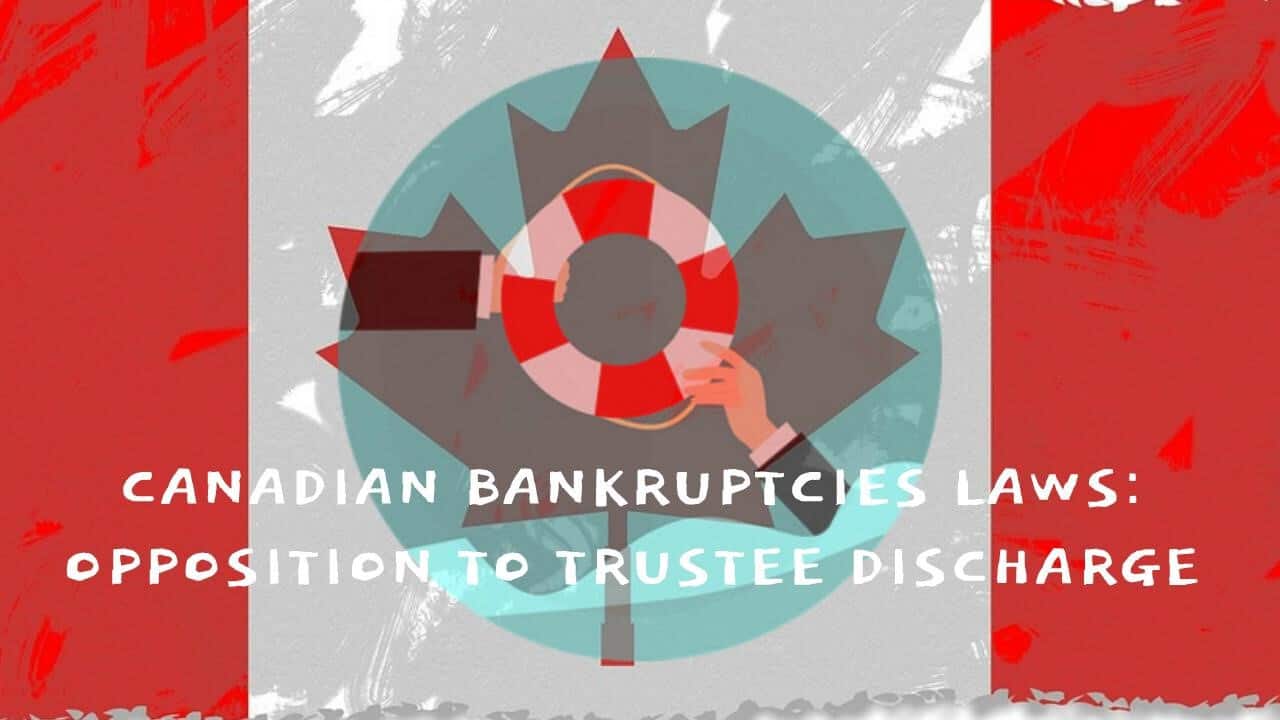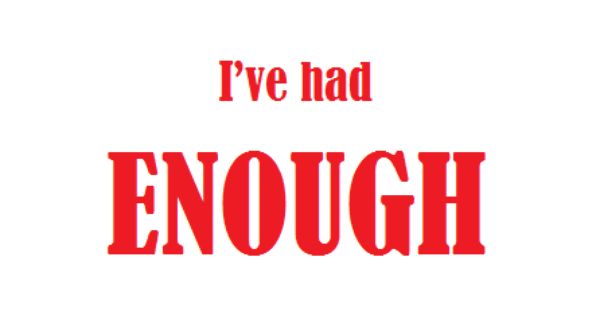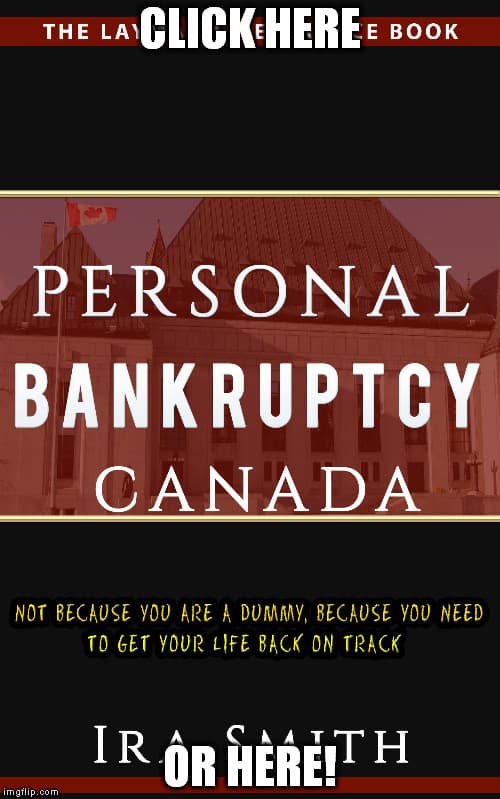If you would prefer to listen to the audio version of this Canadian bankruptcies laws Brandon’s Blog, please scroll to the bottom of the page and click on the podcast
Introduction
Believe it or not, people search online for “Canadian bankruptcies laws” almost 500 times every month. Although the spelling looks a bit off, the point is that people are interested in Canadian insolvency laws. People also search for “Canadian personal bankruptcies laws”.
I recently reviewed an interesting bankruptcy case from British Columbia. The issue is one that does not normally find its way into the courts. The issue deals with the Trustee’s discharge from a bankruptcy administration.
So combining these disassociated events, it gave me the idea for this Brandon’s Blog.
Two kinds of discharges in a personal bankruptcy
In every personal bankruptcy, there are two kinds of discharges. In the normal course, first the bankrupt gets his or her discharge from bankruptcy. Then, when all parts of the bankruptcy administration is finished, the licensed insolvency trustee (formerly called a bankruptcy trustee) (Trustee), gets its discharge.
I have previously written several blogs on the discharge of a bankrupt, but for information purposes, I will briefly summarize the issues surrounding a bankrupt’s application for discharge. Then I will describe the issues in the BC case about the discharge of a Trustee.
The bankrupt’s application for discharge
A bankruptcy discharge is when the bankrupt person is released under Canadian bankruptcy legislation from his or her financial debts. Some people think that it is filing for bankruptcy that releases the bankrupt from responsibility. This is not the situation. It is the discharge process that “discharges” the debts.
The personal bankruptcy discharge is among the key advantages of the Canadian insolvency system. The discharge is crucial to the insolvency process. Debtors, after bankruptcy, can wipe the slate clean and begin again. This is a central concept under the “Canadian bankruptcies laws”.
A personal bankruptcy discharge provides the discharge of many unsecured financial debts. Certain debts will not be discharged. They are:
- support payments to a previous spouse or to children;
- fines or financial charges imposed by the Court;
- debts emerging from fraudulent behaviour;
- student loans if fewer than seven years have passed considering that the bankrupt quit being a full or part-time student.
Notice of opposition to discharge
A bankrupt’s bankruptcy discharge application might be opposed by one or more unsecured creditors or the Trustee. This occurs if the bankrupt has not met all of his/her obligations. It can likewise happen if the insolvent has committed a bankruptcy offense. Those are acts provided in Section 173 (1) of the Bankruptcy and Insolvency Act (Canada) (BIA). The Court will assess the overall conduct of the bankrupt and provide its decision.
How bankruptcies work
There are 4 kinds of discharges:
- Absolute discharge – The bankrupt is released from the commitment to repay the financial liabilities that existed on the day of filing for personal bankruptcy, except for the types of financial obligations indicated above.
- Conditional discharge – A bankrupt has to fulfill specific conditions to obtain an absolute discharge. As soon as all conditions have been met, an absolute discharge is given.
- Suspended discharge – An absolute discharge that will be given at a future date identified by the Court.
- Refused discharge – The Court has the right to decline a discharge.
What does trustee discharge mean?
A recent case decided by The Supreme Court of British Columbia in Kelowna, BC, dealt with the issue of the discharge of a Trustee. After concluding a bankruptcy administration, the Trustee applies for its discharge. The case is McKibbon (Re), 2019 BCSC 848 (CanLII).
William Edward McKibbon is a person who went through the bankruptcy discharge process. His bankrupt’s application for discharge ultimately ended with his getting an absolute order of discharge after fulfilling his discharge conditions on February 24, 2016. His Trustee then received its discharge. The Trustee discharge date was on November 5, 2016.
Mr. McKibbon made an application to the Court for the withdrawal of the Trustee’s discharge. Section 41 of the BIA deals with the discharge of the Trustee. The case was heard on April 25, 2019, in The Supreme Court of British Columbia in Kelowna, BC. The Court’s decision was released on May 30, 2019.
Section 41(1) of the BIA states:
“Application to court
41 (1) When a trustee has completed the duties required of him with respect to the administration of the property of a bankrupt, he shall apply to the court for a discharge.”
The Trustee went through all the steps required and obtained its discharge.
Section 41(5) of the BIA says:
“Objections to be filed with court and trustee
(5) Any interested person desiring to object to the discharge of a trustee shall, at least five days prior to the date of the hearing, file notice of objection with the registrar of the court setting out the reasons for the objection and serve a copy of the notice on the trustee.”
No person objected to the Trustee’s discharge, including Mr. McKibbon. Now in 2019, he was asking the Court to revoke the Trustee’s discharge as he had certain complaints about the Trustee’s conduct.
The allegations against the Trustee
Mr. McKibbon now alleges that the Trustee’s discharge was gotten because the Trustee did not disclose all pertinent facts.
Mr. McKibbon’s allegations were that: (i) the Trustee had experienced issues in the calculation of the surplus income payable by the bankrupt in that the Trustee had miscalculated the surplus income numbers; (ii) the method by which the Trustee calculated the surplus income; and (iii) the Trustee had not finalized the bankrupt’s pre- and post-bankruptcy income tax returns because it had made errors when submitting those tax returns to the Canada Revenue Agency (CRA).
These allegations were disputed by the Trustee. The Trustee claims that the surplus income calculations were appropriate. Concerning the income tax returns, the Trustee stated that the issues relating to the income tax returns were the result of the CRA, incorrectly, re-allocating income and expenses between the pre- and post-bankruptcy periods.
Can the discharge of the Trustee be revoked?
Section 41(8) of the BIA deals with the revocation of a Trustee discharge. It states:
“Effect of discharge of trustee
(8) The discharge of a trustee discharges him from all liability
(a) in respect of any act done or default made by him in the administration of the property of the bankrupt, and
(b) in relation to his conduct as trustee,
but any discharge may be revoked by the court on proof that it was obtained by fraud or by suppression or concealment of any material fact.”.
Mr. McKibbon, in his complaint, said that the Trustee suppressed and concealed material facts.
The Judge’s decision
The Judge in his decision stated that the analysis of BIA section 41(8) goes back to 1899. The case law requires that to revoke the discharge of the Trustee, there needs to be an aspect of fraud in the suppression or concealment.
The Judge also referred to a 2011 decision in the Superior Court of Québec which reached a similar conclusion. That case is Re Delorme, 2011 QCCS 236 (CanLII).
Mr. McGibbon’s position was that these authorities are mistaken and made the wrong decision. He did so with no authorities have actually been pointed out to bring into question those verdicts!
The Judge concluded that in order for there to be a “suppression or concealment of any material fact”, there has to be an element of fraud. He also concluded that Mr. McGibbon had the onus to provide evidence that the Trustee purposely did so with the intent to defraud the court, the creditors or the bankrupt. He found that as Mr. McGibbon failed to do so, he did not have to dig into the details of the allegations.
The Judge also noted that Mr. McGibbon had a bankruptcy discharge hearing, and the Court set the amount of surplus income he needed to pay as part of his conditional discharge from bankruptcy. Therefore, any issue surrounding the surplus income calculation by the Trustee was eliminated with this condition that Mr. McGibbon fulfilled.
Accordingly, the Judge found that there is no basis whereupon any kind of deceptive behaviour can be presumed for the Trustee in failing to reveal any material facts in its discharge application. Therefore, the application to revoke the Trustee’s discharge was rejected. Finally, the Judge allowed for the Trustee to make any submissions it wished to concerning costs to be paid by Mr. McGibbon.
Are you thinking about using “Canadian bankruptcies laws”?
Is your business in financial distress because you cannot collect your billings? Do you not have adequate funds to pay your creditors as their bills to you come due?
If so, call the Ira Smith Team today. We have decades and generations of experience assisting people looking for financial restructuring, a debt settlement plan and to AVOID bankruptcy.
A restructuring proposal is a government approved debt settlement plan to do that. We will help you decide on what is best for you between a restructuring proposal vs bankruptcy.
Call the Ira Smith Team today so you can eliminate the stress, anxiety, and pain from your life that your financial problems have caused. With the one-of-a-kind roadmap, we develop just for you, we will immediately return you right into a healthy and balanced problem-free life.
You can have a no-cost analysis so we can help you fix your troubles. Call the Ira Smith Team today. This will allow you to go back to a new healthy and balanced life, Starting Over Starting Now.
[monkeytools msnip=”http://monkeyplayr.com/playr.php?u=5173&p=20985″]




